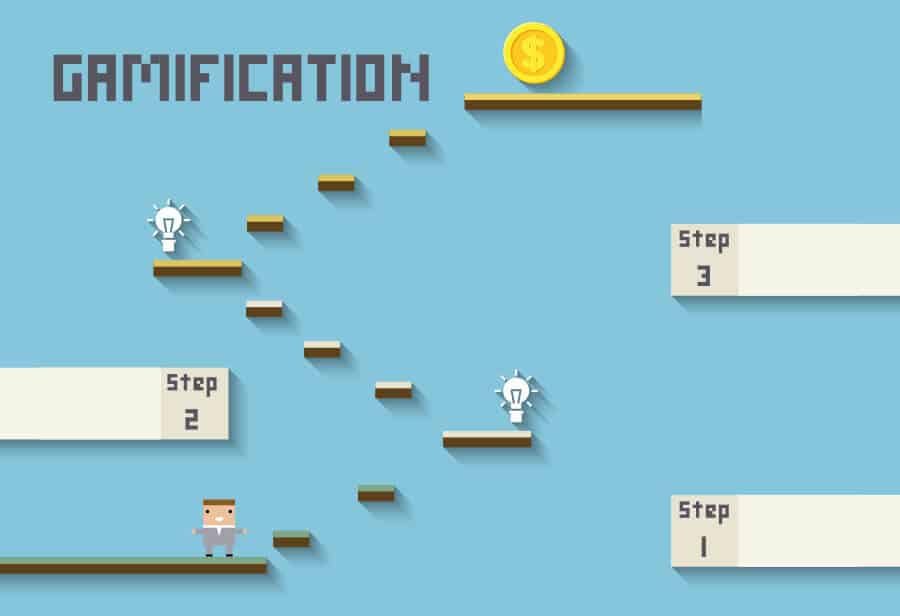Adding Games to enhance the learning process might have sounded like a bizarre idea years ago, but it has become the most innovative learning technique for worldwide learners today. But what are the benefits of gamification? And what skills can students learn through this learning methodology?
It is a fact that we all work better when we get rewarded. Whether that reward is a victory scored in virtual life or in reality, our brain responds practically the same way. At least this is what several studies related to online videogames have shown. But in addition to the charge of dopamine that we tend to release while gaming, the side benefits are also enormous.
According to PubMed Central’s study ‘Brain and Behavior,’ better gaming proficiency may be associated with activating brain regions and the circuitry involved in automatic or highly learned motoric processing and the coordination of sensory, motor, and executive functioning. This means that through gaming, multiple brain regions become activated, including the ones that deal with automatic responding, decision making, and planning.
Considering all of these findings, of course, one would like to add gaming as a learning methodology, especially now that we can benefit from online learning management systems.
Defining Learning Management Systems
The concept of LMS goes back to the late ‘90s. A learning management system is nothing but a software application with several different traits. It documents, reports, tracks, and delivers educational courses, along with training and development programs.
Although LMS first started in the higher education sector, today it has also been incorporated into the corporate market, as an additional way to keep employers open to continuous learning. Learning Management Systems are extremely efficient as they use analytical data to identify gaps in the learning process. You might have heard of some LMS standouts, such as:
And guess what most of these options have in common: they all include gamification in the learning process. Docebo, for instance, is a tremendous supporter of including gamification in order to engage learners. They apply badges, awards, and rankings throughout their courses to make them interactive and retain the participants’ attention.
What does Gamification even mean?
Gamification puts games into non-game contexts. Sounds weird, but it makes sense from a practical standpoint. Gamification involves the use of game mechanics and design features in non-game contexts, meaning in areas that aren’t meant primarily for entertainment. It’s also known as game-based learning, except that game-based learning is more likely used during courses only, whereas gamification can be applied through the entire Learning Management System.
The reason why Learning Management Systems are so suitable to experimenting with and using gamification options is that they have the proper tools for tracking students’ ongoing progress automatically. The LMS analyzes the data, including the time that students spend for viewing and interacting with content. The most common elements that tend to increase learner’s activity in eLearning and LMSs include:
- Learners’ Interaction
- Quiz
- Levels
- Points
- Badges
- Progress bars
- Leaderboards
- Rewards
Gamification tools
Some of the most famous gamification tools for learners are Socrative, Kahoot!, FlipQuiz, Duolingo, Ribbon Hero, ClassDojo, and Goalbook. What makes these elements so effective is that they help learners achieve their learning objectives.
They set the circumstances in which the learner is supposed to perform and succeed in order to be rewarded. That is why each LMS that chooses to incorporate Gamification in its learning content must ensure that the learning objectives have been made clear.
Customized feedback by the end of the game makes learners more prone to interaction and adds up to an increase in their retention rate. We might think of ourselves as very smart and mature to fall for gaming techniques in learning; however, whenever there is competition and rewards are included, we’re all pretty much bound to react and activate our most competitive sensors.
The Advantages of Gamification
There are still people who doubt the idea of online learning in general, let alone adding gamification to the process. These individuals tend to think that the level of attention simply can’t be as good in virtual classes as it is through traditional learning.
I would suggest that this is subjective. While there are people who work better while actually physically present in a classroom, there are others who want to follow an individual pace. Gamification helps them define their way towards success, and with engaging content in their courses, people surely become committed to the process. And that’s where adding games in an LMS comes in. Listed below are some of the most noted advantages of game-based learning.
Fun & Motivating
What better way to learn something than through games, right? If you come up with a better option, maybe you just haven’t been playing the right games all this time. Games tend to strip down the aspect of obligatory learning material. They make the whole process fun, engaging, and active while keeping students eager to achieve their goals.
Challenging
One of the elements of gaming in LMS includes levels of skill and progress. This means that students get to see where they stand, noting their results against the results of others. This automatically triggers their competitive personalities. Hence, they can set better goals for themselves and achieve greater results while they compare scores.
Boosting creativity
Including gamification elements in an LMS, and specifically letting students design their own gaming elements, can result in an increase of their creativity, considering that they have to find ways to incorporate the badges in the learning course. These innovative options benefit the learners, as it keeps their learning material challenging and engaging.
Decision-making skills
A gamification LMS has many hidden perks that learners get to experience throughout their courses or training. Before you know it, the participants’ decision-making skills will be more prompt; and they will develop a sense of strategic thinking, all while having fun with tasks that seem to be nothing but common games. Gradually changed behavior is certainly the hidden trick that makes gamification so successful.
Feedback and Communication
When learning through games, participants get instant feedback confirming their results. Regardless of whether they did well or badly, they can see their answers and decide to correct them or level them up. This immediate feedback improves their retention, specifically considering that they are also able to communicate with other trainees or participants to discuss their techniques if the LMS has the option of gaming teams.
So is learning through Gaming overall worth it?
Well, you do not have to take our word for it. Simply research the many statistics available out there. According to Gabe Zichermann, cited by (Giang, 2013), the use of game mechanics improves participants’ abilities to learn new skills by 40%. And game approaches lead to a higher level of commitment and motivation of users to activities and processes in which they are involved. So why not make learning something we can look forward to!
Photos: Shutterstock, edit title: Martina Advaney
Support us!
All your donations will be used to pay the magazine’s journalists and to support the ongoing costs of maintaining the site.
Share this post
Interested in co-operating with us?
We are open to co-operation from writers and businesses alike. You can reach us on our email at [email protected]/[email protected] and we will get back to you as quick as we can.












